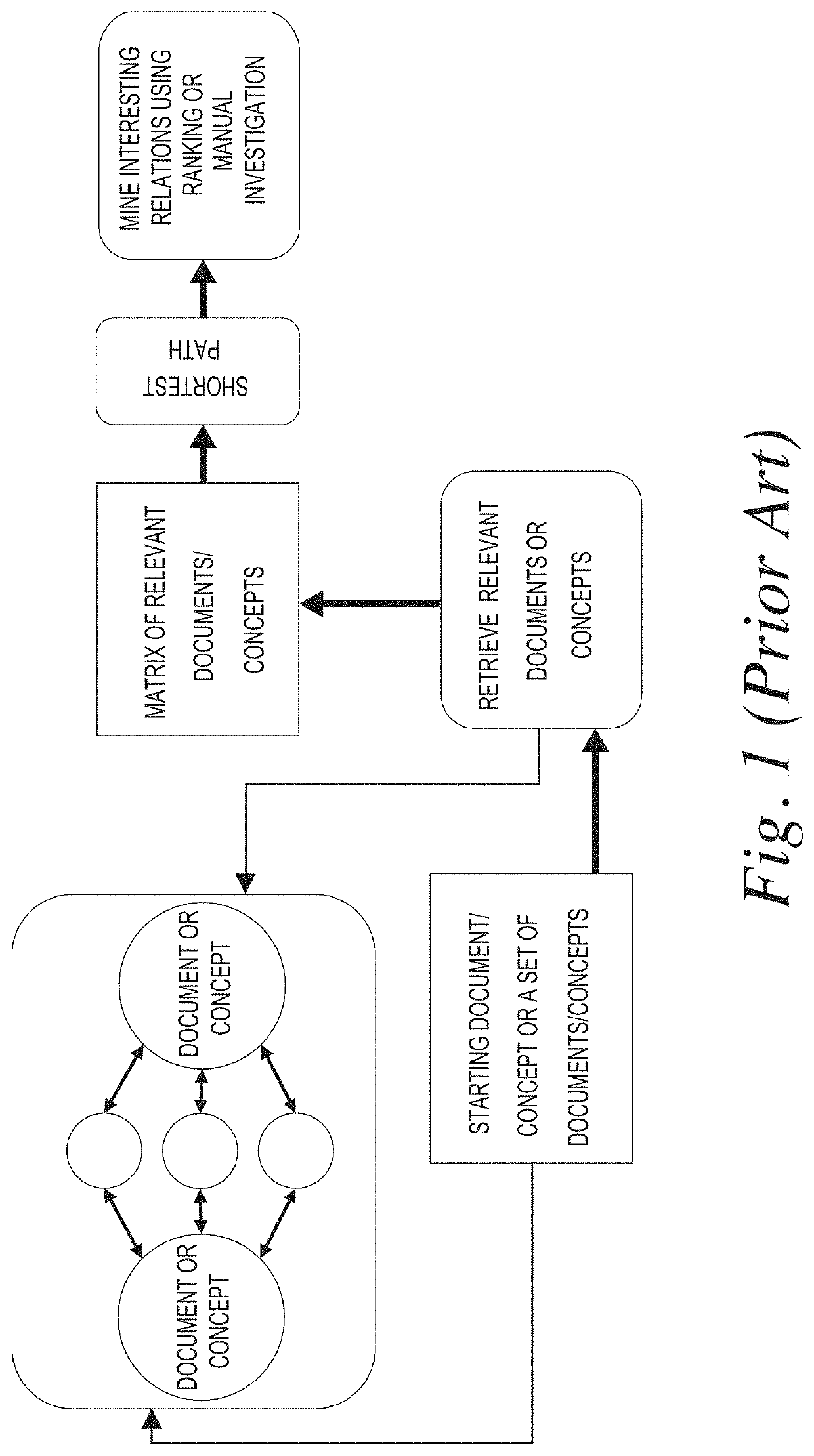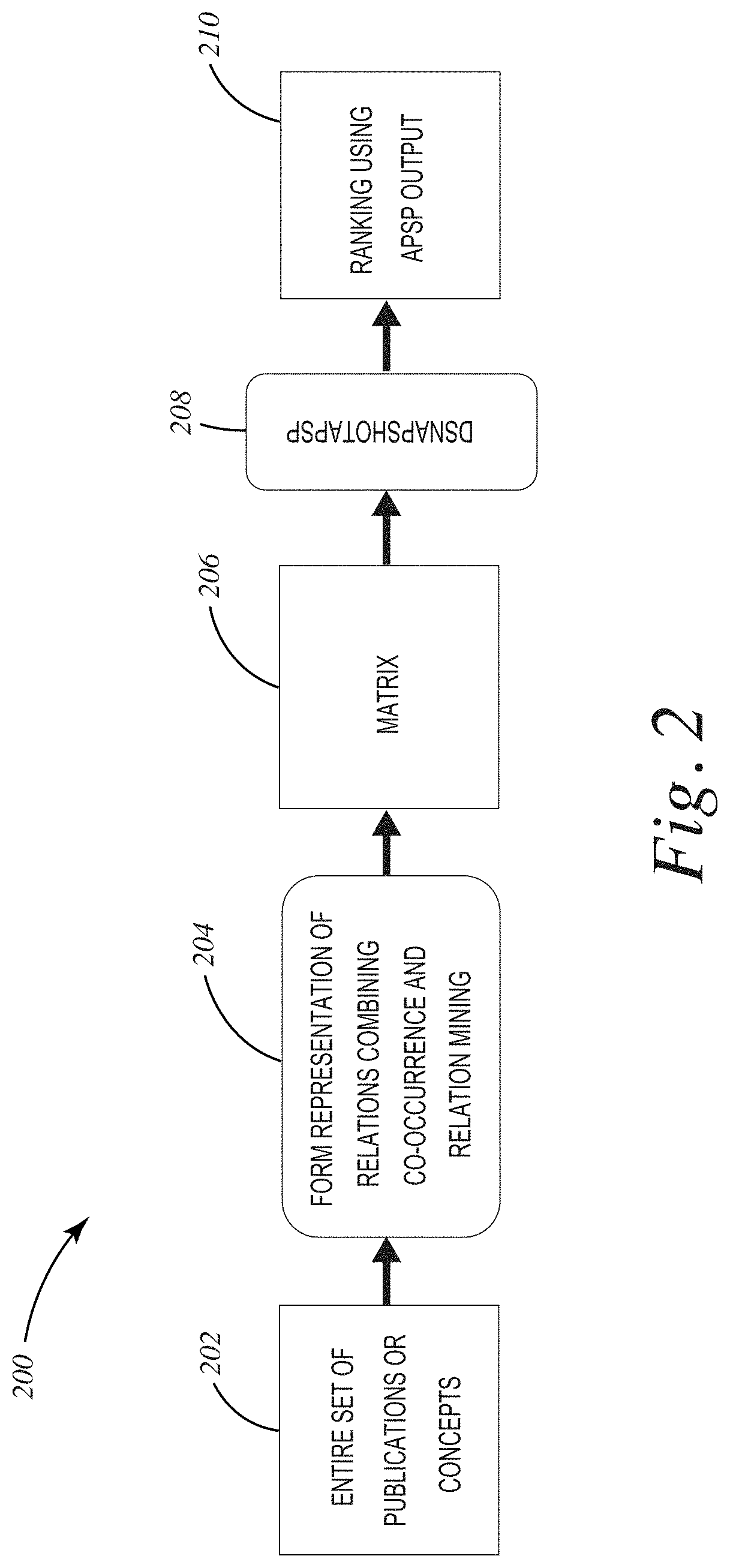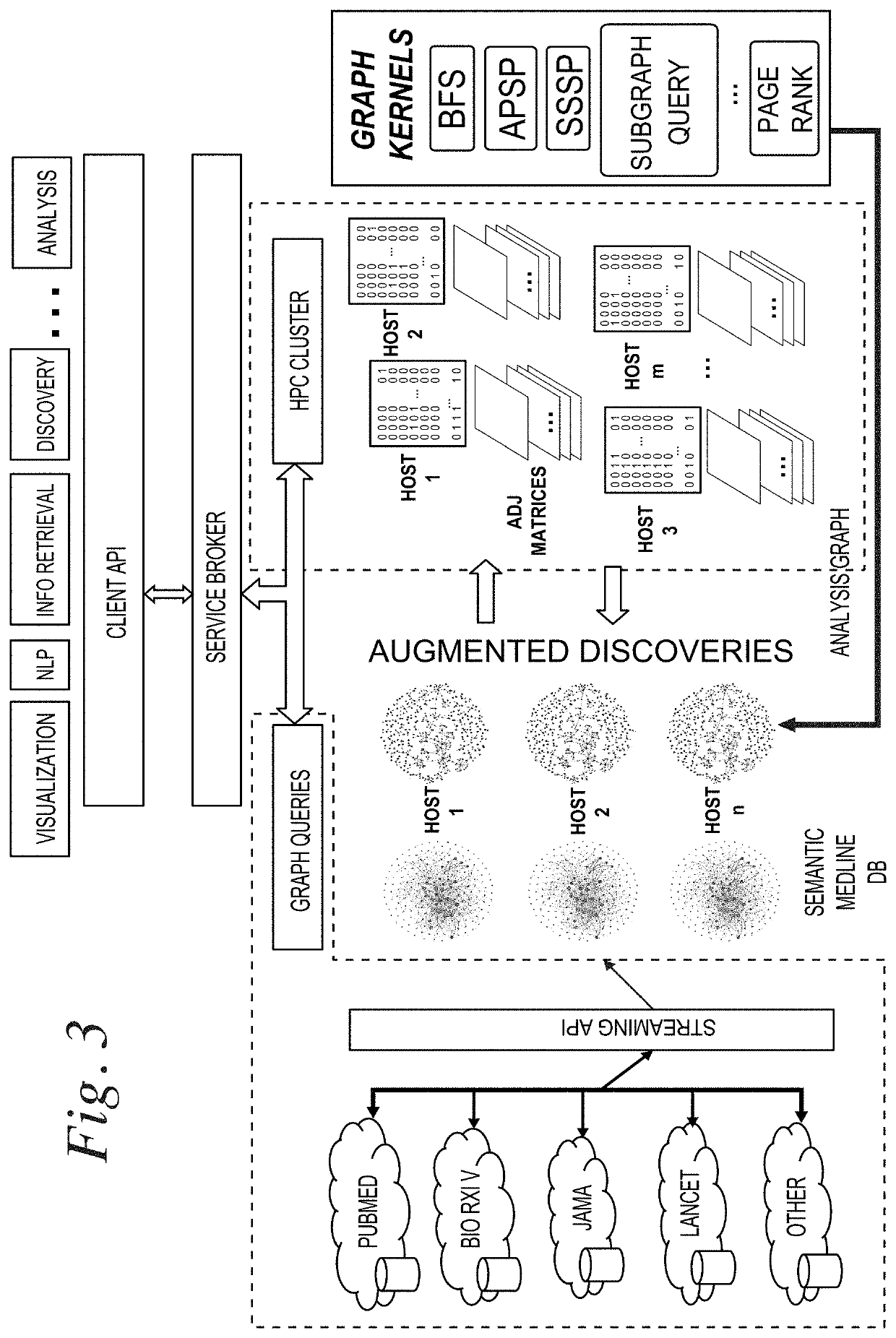Knowledge graph analytics kernels in high performance computing
- Summary
- Abstract
- Description
- Claims
- Application Information
AI Technical Summary
Benefits of technology
Problems solved by technology
Method used
Image
Examples
Embodiment Construction
[0042]One aspect of the present disclosure is generally directed to a distributed accelerated semiring all-pairs shortest path (DSNAPSHOT) algorithm. DSNAPSHOT implements a GPU-accelerated, distributed-memory parallel version of the Floyd-Warshall (FW) algorithm. In one embodiment, DSNAPSHOT can be used calculate the shortest path between all pairs of entities in a knowledge graph, such as a biomedical knowledge graph thereby enabling the discovery of meaningful relations across biomedical knowledge.
[0043]Embodiments of DSNAPSHOT, provide a parallel APSP algorithm designed as a diagonal, panel and min-plus outer product that can leverage the following features: lookahead, bandwidth asynchronous ring communication for broadcast, and rank placement. The lookahead feature refers to performing computation and communication concurrently or overlapping. Improved rank placement can be provided by placing the subset of communicating processes closer to each other in physical machines. It is...
PUM
 Login to view more
Login to view more Abstract
Description
Claims
Application Information
 Login to view more
Login to view more - R&D Engineer
- R&D Manager
- IP Professional
- Industry Leading Data Capabilities
- Powerful AI technology
- Patent DNA Extraction
Browse by: Latest US Patents, China's latest patents, Technical Efficacy Thesaurus, Application Domain, Technology Topic.
© 2024 PatSnap. All rights reserved.Legal|Privacy policy|Modern Slavery Act Transparency Statement|Sitemap



